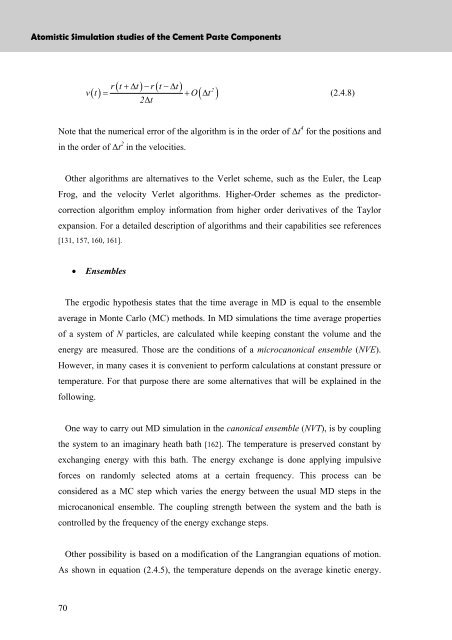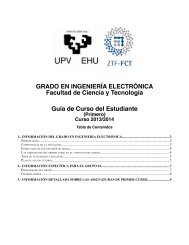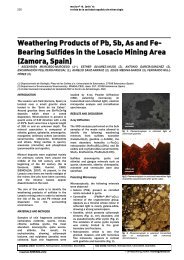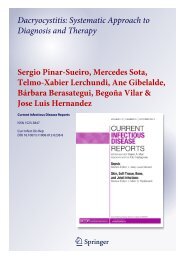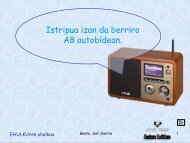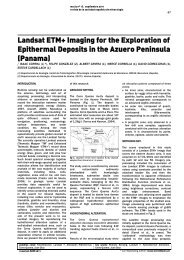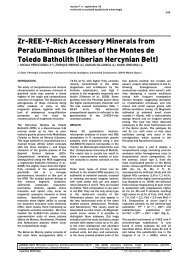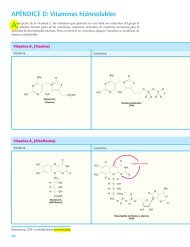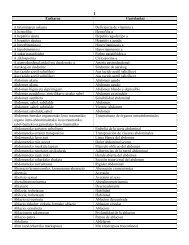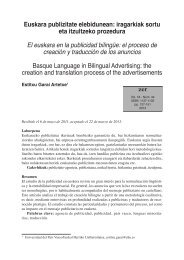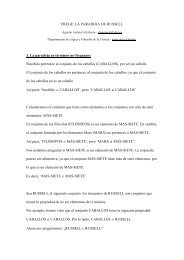Atomistic Simulation studies of the Cement Paste Components
Atomistic Simulation studies of the Cement Paste Components
Atomistic Simulation studies of the Cement Paste Components
You also want an ePaper? Increase the reach of your titles
YUMPU automatically turns print PDFs into web optimized ePapers that Google loves.
<strong>Atomistic</strong> <strong>Simulation</strong> <strong>studies</strong> <strong>of</strong> <strong>the</strong> <strong>Cement</strong> <strong>Paste</strong> <strong>Components</strong><br />
( +Δ ) − ( −Δ )<br />
r t t r t t<br />
v()<br />
t = + O Δt<br />
2Δt<br />
2<br />
( )<br />
(2.4.8)<br />
Note that <strong>the</strong> numerical error <strong>of</strong> <strong>the</strong> algorithm is in <strong>the</strong> order <strong>of</strong> Δt 4 for <strong>the</strong> positions and<br />
in <strong>the</strong> order <strong>of</strong> Δt 2 in <strong>the</strong> velocities.<br />
O<strong>the</strong>r algorithms are alternatives to <strong>the</strong> Verlet scheme, such as <strong>the</strong> Euler, <strong>the</strong> Leap<br />
Frog, and <strong>the</strong> velocity Verlet algorithms. Higher-Order schemes as <strong>the</strong> predictorcorrection<br />
algorithm employ information from higher order derivatives <strong>of</strong> <strong>the</strong> Taylor<br />
expansion. For a detailed description <strong>of</strong> algorithms and <strong>the</strong>ir capabilities see references<br />
[131, 157, 160, 161].<br />
• Ensembles<br />
The ergodic hypo<strong>the</strong>sis states that <strong>the</strong> time average in MD is equal to <strong>the</strong> ensemble<br />
average in Monte Carlo (MC) methods. In MD simulations <strong>the</strong> time average properties<br />
<strong>of</strong> a system <strong>of</strong> N particles, are calculated while keeping constant <strong>the</strong> volume and <strong>the</strong><br />
energy are measured. Those are <strong>the</strong> conditions <strong>of</strong> a microcanonical ensemble (NVE).<br />
However, in many cases it is convenient to perform calculations at constant pressure or<br />
temperature. For that purpose <strong>the</strong>re are some alternatives that will be explained in <strong>the</strong><br />
following.<br />
One way to carry out MD simulation in <strong>the</strong> canonical ensemble (NVT), is by coupling<br />
<strong>the</strong> system to an imaginary heath bath [162]. The temperature is preserved constant by<br />
exchanging energy with this bath. The energy exchange is done applying impulsive<br />
forces on randomly selected atoms at a certain frequency. This process can be<br />
considered as a MC step which varies <strong>the</strong> energy between <strong>the</strong> usual MD steps in <strong>the</strong><br />
microcanonical ensemble. The coupling strength between <strong>the</strong> system and <strong>the</strong> bath is<br />
controlled by <strong>the</strong> frequency <strong>of</strong> <strong>the</strong> energy exchange steps.<br />
O<strong>the</strong>r possibility is based on a modification <strong>of</strong> <strong>the</strong> Langrangian equations <strong>of</strong> motion.<br />
As shown in equation (2.4.5), <strong>the</strong> temperature depends on <strong>the</strong> average kinetic energy.<br />
70


